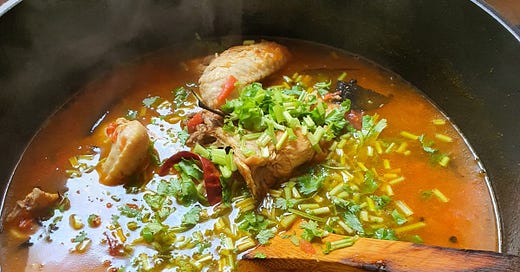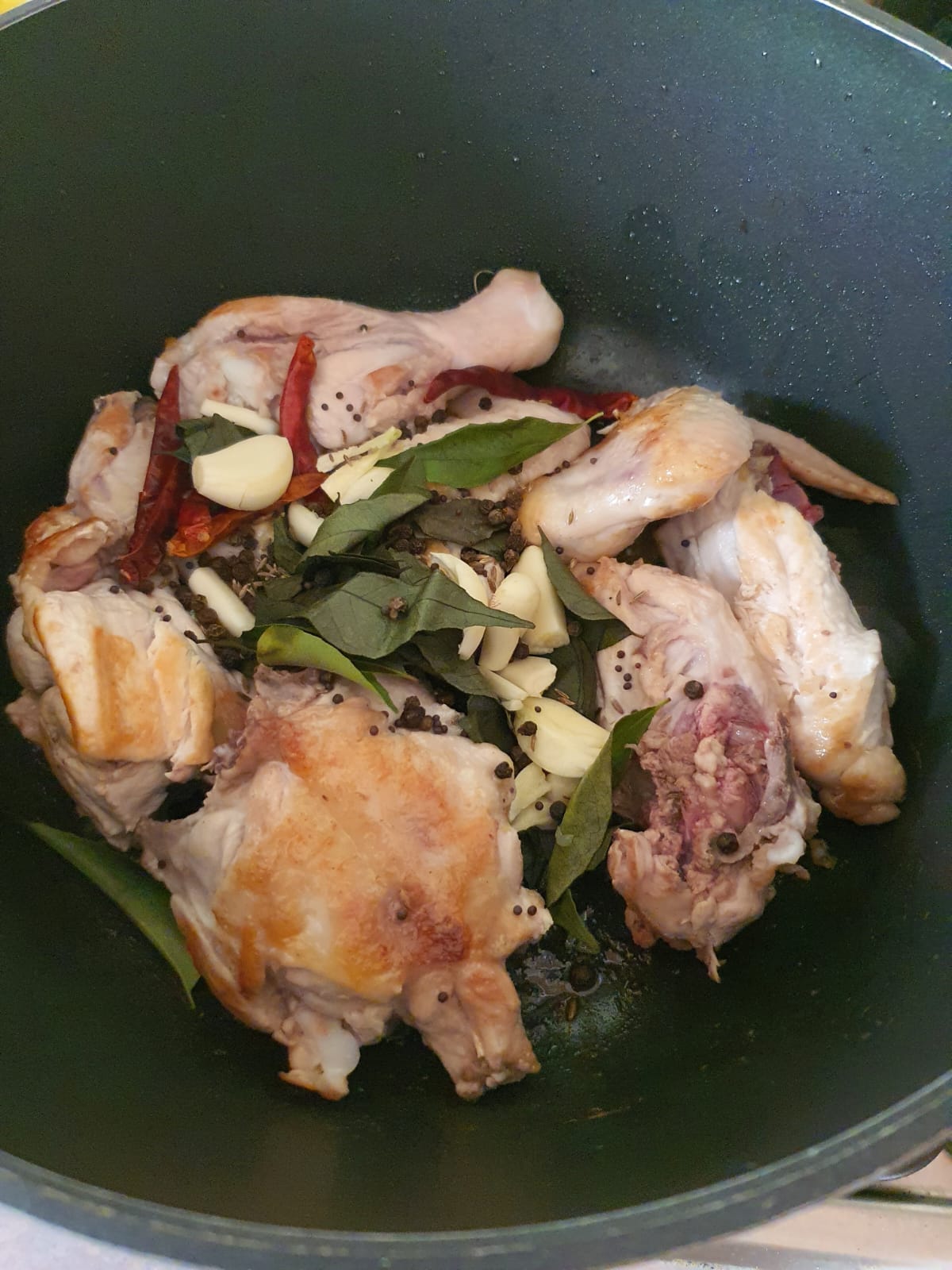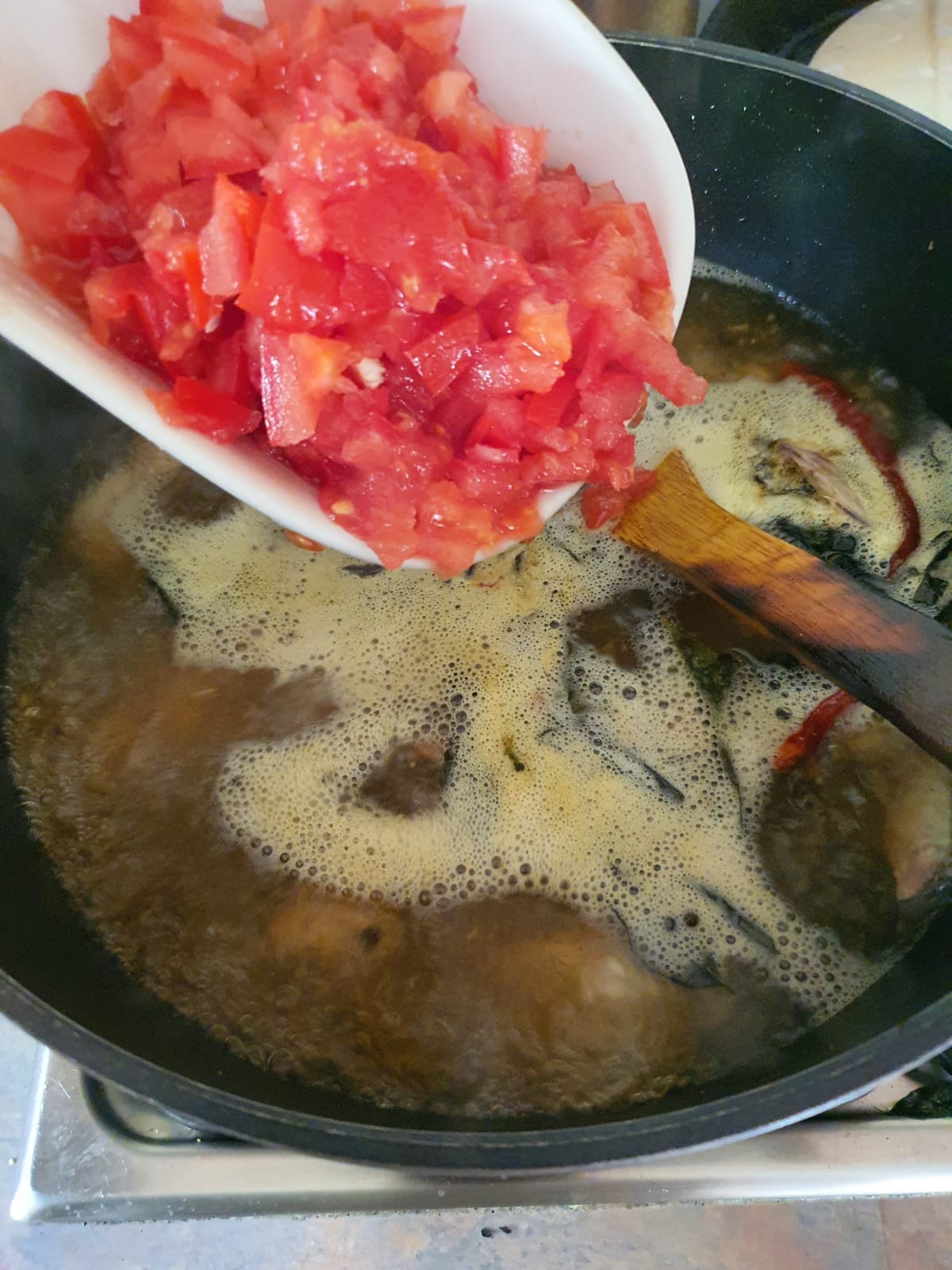Chicken rasam to clear the sinuses
I find myself making soup when I feel under the weather or when my body feels like it needs some hydration. While I tend to reach for Chinese medicinal herbs or dried goodies such as dried scallops when making soup, I’ve grown really fond of making chicken rasam. It’s well-spiced, has umami from the chicken and tomatoes, and has such an appetizing tang. I also think that it balances out other dishes so well on nights where we are eating Indian food at home.
This time of the year is perfect for such a sinus-clearing soup because flowers are in full-bloom and the high pollen count is really getting to Wex (though I am surprisingly immune to it).
I first learnt of rasam from Aruna Shanmuga Vadivel, one of our contributors for the Deepavali edition of Seasonings Magazine, who came on the podcast last year to chat with me all about it. Aruna says that she used to eat this soup almost every day at home as part of her meals, and that she considers it a kind of functional food for its medicinal properties.
Even though the rasam that Aruna taught me to make is vegan, she tells me that other variations exist and recalls a crab rasam that she’s had at a restaurant where the tangy soup penetrated the shell and into the flesh of the crustacean.
The way I make chicken rasam is a one-pot method. If you’ve made soups from Singapore Noodles in the past, you’d realise that I’m very fond of frying chicken pieces in a dry pot with no oil. The chicken skin renders as it cooks and this is what provides the fat needed to temper the spices in the rasam. The browning also adds so much flavour that it is possible to get a very flavourful soup is very little time.
Adding crushed, whole garlic cloves is something I picked up from Aruna. Her grandmother, whom she learnt the dish from, emphasised crushing the garlic to release allicin, which reduces heart-related diseases. I also like that, when you keep garlic whole, you get mellow and sweet fat cloves at the end of the cooking process to eat.
Once the leaves and spices start popping in the chicken fat, I add rasam powder from Jeya Spices, owned by third-generation spiceman Jeya Seelan who was previously on the podcast. The very lovely Taahira from Spice Zi Kitchen generously mailed this to me and it's helped quell my homesickness during the pandemic so much!
I give the chicken a good toss with the spices, then add water and LOTS of tomatoes… like more than half the weight of the chicken. Tomatoes in soups are so underrated - they add so much umami and natural sweetness, not to mention a beautiful red sheen to the finished soup. I always feel very nourished and hydrated whenever I drink a soup with lots of tomatoes.
While I leave tomatoes in wedges when making ABC soup, for rasam, I like them to disintegrate fully into the soup. Aruna describes the tomatoes in her soup as “smashed”. For this, I cut the tomatoes in half, squeeze the pulp into the pot, then chop up the flesh before adding it to the soup. You can skip the squeezing, but because tomatoes are so juicy, they tend to make a bit of a mess when chopped with their pulp, and you lose a lot of the flavourful juices.
With so much tomatoes and good browning, the soup does not need long to get good flavour. I typically boil it for just 20 minutes, while I cook the rice and prepare a vegetable dish or two. The time is really arbitrary. If you are cooking more dishes or the rice takes awhile to cook, put a lid on and lower the heat to cook the soup longer - you get a fall-off-the-bone chicken that way.
Once ready to serve, stir in some tamarind pulp and scatter over chopped coriander. This is a great use for all the straggly coriander stems that you have in your refrigerator. And there you have it! A flavourful soup that is punchy, sweet, tangy, and umami, with a lovely red sheen - a combination of the disintegrated tomato, turmeric and chicken fat. Delicious with rice, but I had it with leftover biryani and it was THE BOMB. Chicken rasam, where have you been my whole life!
Chicken rasam
Serves 4







